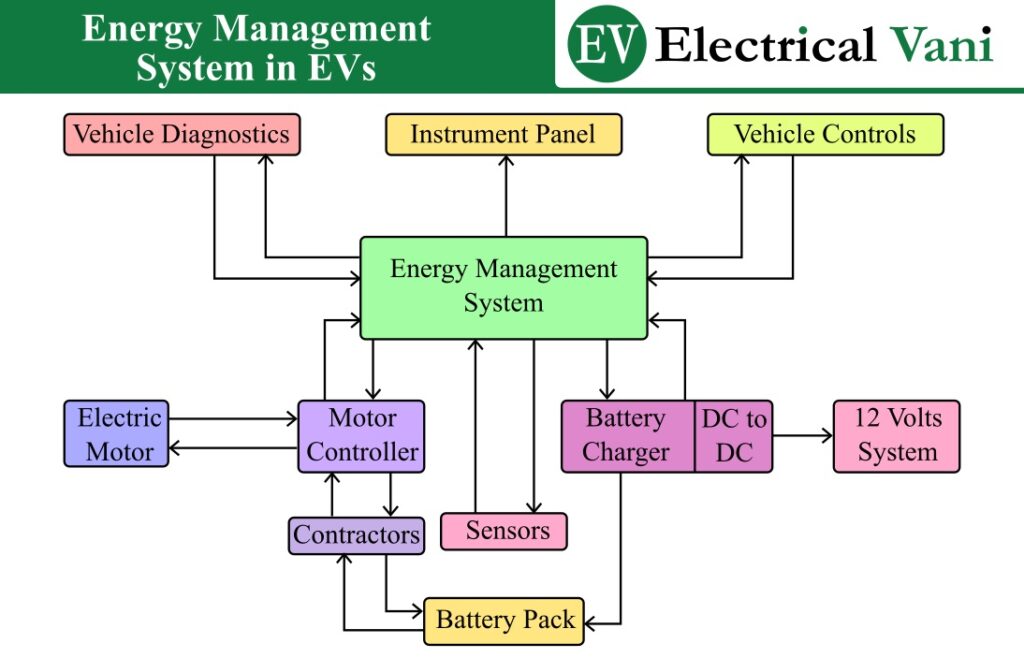In this article, I will explain the Energy Management System (EMS) in electric vehicles. In electric vehicles, the Energy Management System (EMS) is a computer-based electronic system used to provide information about energy usage and also provides tools to manage and reduce energy consumption. The energy management system gathers, stores, and analyzes data for optimized energy consumption of an electric vehicle component like the electric motor.

Introduction to Energy Management System in EVs
In electric vehicles, the energy management system is considered the vehicle’s brain. It monitors and controls all the essential functions of the different electric vehicle subsystems.
The energy management system is nothing but a computer-based system that is mainly responsible for the optimization of charging and energy output of batteries so that maximum operating range and improved performance can be achieved.
In practice, the energy management system of an electric vehicle can increase the vehicle range by 10% to 20% and the battery life by 25% to 30%. It is also able to estimate the available range for a specific state of battery charge.
The energy management system of an electric vehicle maintains an electronic log of its performance that helps service personnel execute a diagnostic check on the vehicle. It provides the necessary information required for the service of the vehicle.
In an electric vehicle, the use of an energy management system is essential because it gives a relatively short driving range as compared to an internal combustion engine vehicle. Therefore, to maximize the utilization of electrical energy stored in the batteries, an intelligent energy management system is required.
The block diagram of a typical energy management system (EMS) used in electric vehicles is shown in the following figure.

Let us now understand the important functions that an energy management system performs in an electric vehicle.
Function of Energy Management System in EVs
An intelligent energy management system obtains inputs using sensors from different subsystems of an electric vehicle, such as the temperature of inside and outside air, voltage, and current of batteries, voltage and current of electric motor, vehicle speed and acceleration, and more. Using all these inputs, it performs the following vital functions:
- EMS optimizes the energy flow in the system of the electric vehicle.
- EMS estimates the remaining energy in the batteries.
- EMS predicts the residual driving range in the available on-board energy.
- EMS provides suggestions for more efficient driving behavior.
- EMS regulates the temperature in response to the external climate.
- EMS directs the regenerative energy from braking to batteries.
- EMS adjusts the brightness of lighting according to the external environment.
- EMS provides a best-suited battery charging algorithm.
- EMS analyses the operation history of the batteries for better optimization of energy delivery.
- EMS identifies any defective component or malfunctioning of the electronic system.
Overall, an energy management system is an important component for improved efficiency and performance of the electric vehicle.
Also, if we combine the energy management system with a navigation system, it can perform the following important functions:
- It can plan more energy-efficient routes.
- It can locate EV charging stations for extended trips.
- It can modify the range predictions depending on the traffic conditions.
Conclusion
In conclusion, the use of an energy management system in electric vehicles helps in optimizing energy consumption, minimizing energy costs, extending driving range, etc. In electric vehicles, the energy management system or EMS acts as the brain of the entire intelligent system of the electric vehicle. In this article, I have explained the basics and functions of energy management systems in electric vehicles.